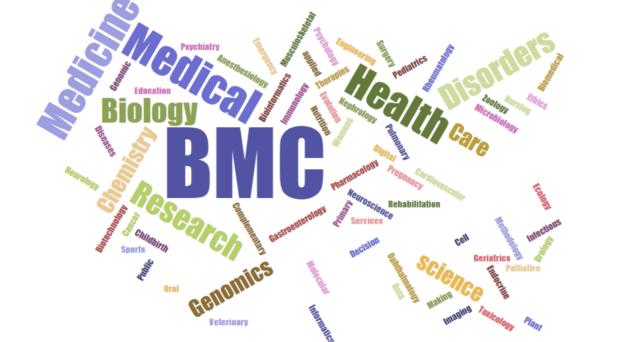
BMC Medical Ethics – The missing voices in the conscientious objection debate: British service users’ experiences of conscientious objection to abortion

The 1967 Abortion Act also regulates conscientious objection in the UK, stating that individuals (including healthcare providers) may ‘object’ to participate in an abortion based on religious, moral, philosophical, ethical, or personal beliefs. Current research mainly focuses on conscientious objection from an ethical, legal, or financial point of view and the perspectives of healthcare providers. In contrast, the impact of conscientious objection on service users and their abortion journey is understudied, although this aspect appears essential to estimate the real-world consequences of abortion policies.
The authors of this study created a platform for women and those who can become pregnant to share experiences and opinions on conscientious objection. They interviewed service users and assessed how the conscience clause impacted their reproductive rights or influenced their access to and experience of abortion in the UK.
All interviewees were able to access legal abortion without significant delays, mostly via their GP and not via self-referral. Although some doctors adhered to the relevant guidelines, not all were transparent in communicating conscientious objection, failed to provide comprehensive information, or treated service users judgmentally. Overall, service users felt scared, angry, and hopeless.
These findings indicate that conscientious objection can work in practice even though more education and regulation that includes the missing voices in the conscientious objection debate are needed to improve doctors’ adherence to guidelines and ensure fair, impartial, non-judgemental care of all service users.
BMC Pregnancy and Childbirth – Building a predictive model of low birth weight in low- and middle-income countries: a prospective cohort study

Low birth weight (LBW, < 2500 g) infants are at higher risk for health complications and may require advanced neonatal care. Due to the limited provision of advanced neonatal care in low- and middle-income countries (LMICs), its strategic allocation becomes critical to improve health outcomes for LBW infants.
In these settings, predictive modeling can prove invaluable in identifying mothers at high risk of delivering LBW infants, enabling timely referrals to specialized care facilities.
This work tested five different predictive models to determine pregnancy characteristics associated with a greater probability of delivering LBW infants, using a large global registry, with enrolled pregnant women from several LMIC countries and research sites. Based on the obtained area under the curve (0.72), accuracy (61%), and recall (72%), the logistic regression model showed the best performance. All top-performing models identified clinical site, maternal weight, hypertensive disorders, severe antepartum hemorrhage, and antenatal care as critical factors for predicting LBW.
Based on these findings, predictive modeling proves effective in identifying high-risk pregnant women who may deliver LBW infants. This approach can be further developed into a clinical decision support tool to assist healthcare providers and enable timely referral of high-risk pregnant women before delivery.
Optimized referral and allocation could have substantial public health implications in LMICs by directing limited resources towards the most vulnerable infants, potentially reducing long-term morbidity and mortality rates in this population.
BMC Primary Care – Inequities in referrals to a breast cancer risk assessment and prevention clinic: a mixed methods study

Breast cancer care inequities disproportionately affect minoritized groups of women in the US. Black women face 40 % higher breast cancer mortality rates than White women. Personalized risk assessment and tailored care are essential to reducing inequities in prevention and treatment, yet evidence suggests that Black and Hispanic women are less likely to access these services.
This study focused on the Breast Cancer Personalized Risk Assessment, Education, and Prevention (B-PREP) program which helps individuals determine and understand their breast cancer risk, and informs on enhanced screening, risk-reducing therapies, and genetic testing.
In line with previous findings, this work revealed significant racial, ethnic, social, and linguistic inequities in access and referral to B-PREP. Black, Hispanic, non-English speaking, and publicly insured patients were less likely to be referred for breast cancer risk assessment than White or privately insured patients.
The authors also conducted structured interviews with primary care clinicians to explore potential determinants of inequitable B-PREP referral patterns. Time and capacity limitations represented primary barriers leading to a lack of systematic approaches to address risk assessment and referral. Structural challenges, such as language barriers and socioeconomic factors, were also reported.
Altogether, this article exposes missed opportunities to provide preventive and screening services for breast cancer to historically marginalized groups that often experience delayed diagnoses and more adverse outcomes and calls for initiatives to improve primary care practitioners’ education, facilitate personalized risk assessment, and ultimately promote health equity.
BMC Ecology and Evolution – First filter feeding in the Early Triassic: cranial morphological convergence between Hupehsuchus and baleen whales

The evolutionary history of filter-feeding, a feeding strategy primarily known in whales, takes an intriguing turn with knowledge of the convergent evolution of Hupehsuchus nanchangensis, a one-meter-long marine reptile from the Early Triassic.
The feeding strategy of Hupehsuchus remained long controversial, mostly because of the poorly preserved available skulls and the lack of gill slits of fish or the baleen of whales, the key structures that enable filter-feeding in fish and mammals.
Zi-Chen Fang et al. aimed to resolve this controversy using two fossil specimens of Hupehsuchus nanchangensis, with a well-preserved dorsal view of the skull. From a comparison with skull reconstructions of modern animals, it emerges that the shape of the skull roof and snout of Hupehsuchus nanchangensis highly converges with that of modern whales.
Its snout exhibits a long intercrural space similar to the mesorostral groove in cetaceans, allowing Hupehsuchus to enlarge its buccal cavity, a vital requirement for effective filter feeding. These findings also suggest that Hupehsuchus likely engaged in continuous ram filter feeding, like bowhead and right whales, swimming slowly with their mouth open.
This work challenges the notion that marine reptiles lacked the necessary adaptations for filter feeding and indicates that Hupehsuchus might have acquired such adaptations within only 5 million years as a result of the rapid biotic recovery of complex marine ecosystems after the end-Permian mass extinction.
BMC Health Services Research – What is best for Esther? A simple question that moves mindsets and improves care

Individuals with complex care needs often must navigate a web of services from various providers, including hospitals, primary care, home care, and municipal care, which can lead to treatment disruptions and harm their well-being.
The Swedish healthcare project, known as Esther, is a successful example of addressing these challenges. Named after Esther’s story, the project champions a person-centered, holistic approach that prioritizes individual preferences and needs, redefining the care experience. Initially designed for older adults, Esther now caters to individuals of all ages with complex care needs. It has yielded significant outcomes, including reduced hospitalizations, increased home care availability, enhanced patient satisfaction, and trust in regional healthcare.
To disclose staff experiences and lessons learned, the authors of this study conducted a retrospective longitudinal case study with a qualitative mixed-methods approach based on document analyses, interviews, and focus groups with staff members and patients. Their findings underscore the critical roles of co-production and person-centeredness in improving care. Esther’s persistence over two decades is attributed to the promotion of systems thinking, embracing change psychology, and multidisciplinary improvement dialogues. Key focus areas include incentives, work in practice, and integration sustained by trust in frontline staff and continuous senior management support. A continuous learning approach further promotes integration into daily practice.
The central question “What is best for Esther?” unifies people, flattens the hierarchy, and reminds all care providers why they need to improve together. This paper presents valuable knowledge on how to move mindsets that connect and improve the care of persons with complex care needs, thereby informing and guiding practice in other health and welfare contexts.
Comments